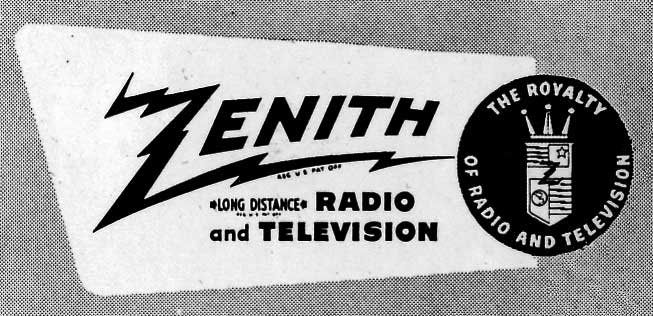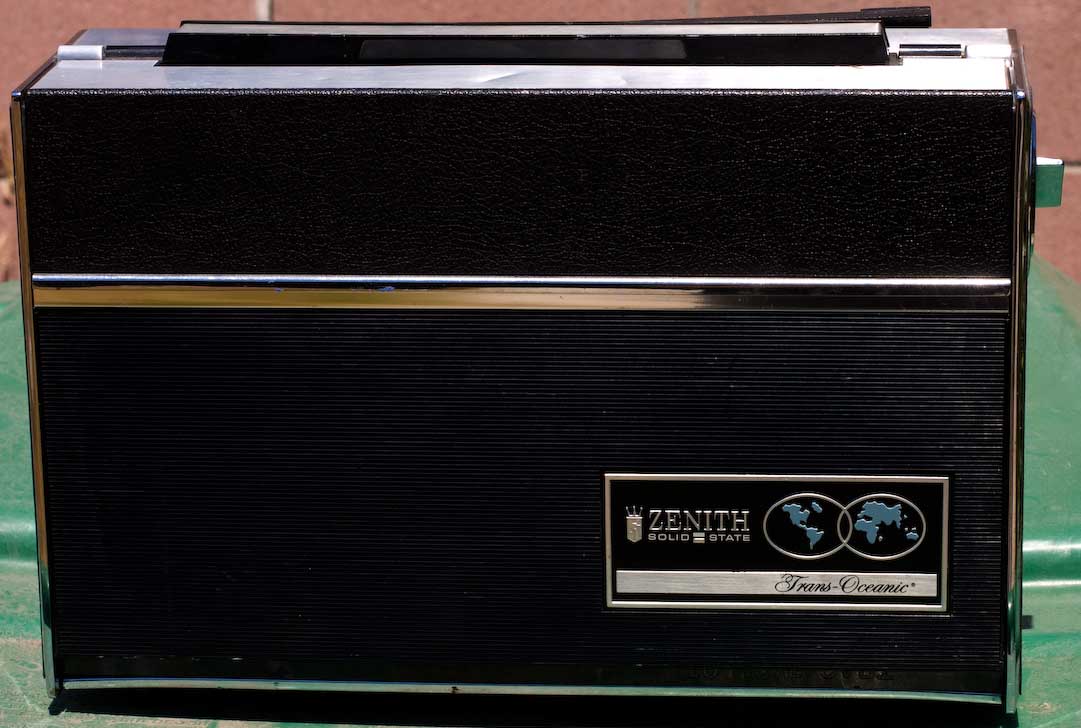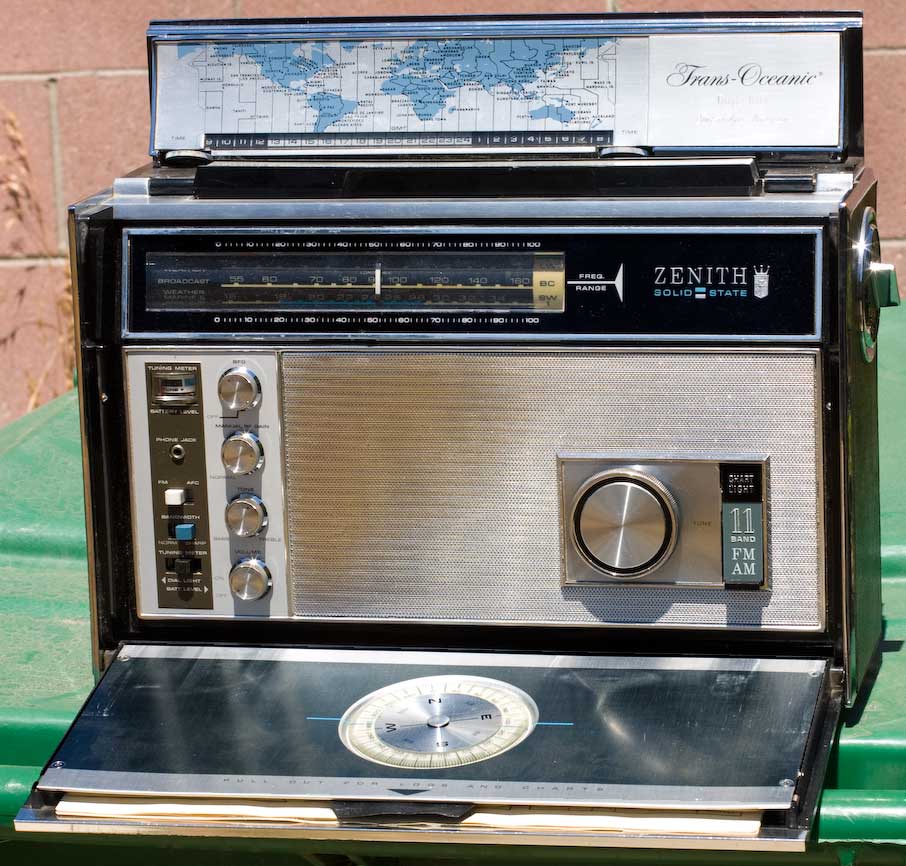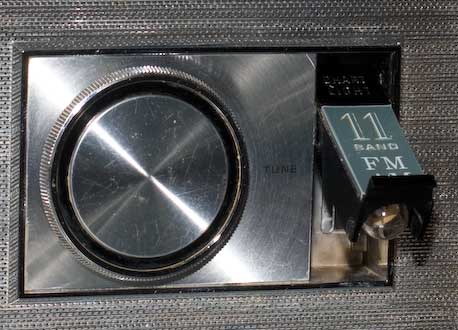
Zenith made four solid-state Trans-oceanics (not counting minor variations within each): the Royal 1000, Royal 3000, Royal 7000, and the R-7000. As a very basic comparison: the 1000 was the base model; the 3000 added FM broadcast reception, the 7000 added weather and aircraft "bands." The R-7000 covered all of HF, not just world-band segments. There was also a Royal 2000, but it only picked up commercial broadcast AM and FM, and isn't truly a Trans-Oceanic. I don't know why there was no 4000, 5000 or 6000 models. If I ever meet someone from Zenith's marketing department, I'll ask.
There were a lot of differences which are described in detail and better than I would do, on other websites. A Google search should pull up several on the first page of results.
This one is mine, acquired for a price I was willing to pay. I always thought it would be nice to have one but usually they're too expensive. (The killer is the R-7000, which is at least a couple hundred dollars even in mediocre shape. I'll discuss that one if I ever find one I think is affordable.)

 The 1000 and 3000 are largely the same machine except that the 3000 includes FM broadcast. The 7000, on the other hand, was a redesign inside and out. One of the neat things is the new cabinet. The front panel still drops down, but unlike the earlier models, it pushes in underneath, so if have this on the edge of a table or desk, the front panel doesn't stick out, or flop down and toss the log book onto the floor.
The 1000 and 3000 are largely the same machine except that the 3000 includes FM broadcast. The 7000, on the other hand, was a redesign inside and out. One of the neat things is the new cabinet. The front panel still drops down, but unlike the earlier models, it pushes in underneath, so if have this on the edge of a table or desk, the front panel doesn't stick out, or flop down and toss the log book onto the floor.
I generally don't like later design changes because I think they're often steps backwards. But in this case, I think the 7000 is a big improvement aesthetically. I like the hinged, flip-top. I think the slide-rule is a little easier to read. I really like the tuck-in log book.
 I was also impressed with the little flip-up lamp for the log book, which is located next to the tuning dial (under the 11 Band FM/AM badge). It works off the same circuit as the dial lamp. I like listening to the radio at night—I can easily see where it would be useful if you wanted to write something while you're listening in the dark.
I was also impressed with the little flip-up lamp for the log book, which is located next to the tuning dial (under the 11 Band FM/AM badge). It works off the same circuit as the dial lamp. I like listening to the radio at night—I can easily see where it would be useful if you wanted to write something while you're listening in the dark.
The power supply was also redesigned, and it's interesting. On the 1000/3000 models, you open up the back and the battery box flops out; you have to tuck it in just-so to get the back fastened properly. It also exposes a chunk of the electronics, like many tuning coils, which really shouldn't be so easily accessed.
On this one you undo the thumbscrew and a door on the back pops off which exposes just the battery compartment; all the innards are protected. It also exposes five antenna lugs for various inputs (plus ground).
If you take the three screws out of the bottom, then the whole back comes off and you're into the guts of the machine; and there's our old friend, the round three-prong plug that's also on the 1000 and 3000 models. I haven't tried it, but I'd bet money the battery compartments are interchangable (as a power source).
What I don't like, so far, is the AC adapter plug, which of course is missing. My 1000 had an add-on jack, and the 3000 had a factory jack: you just need a 12volt wall-wart and a monoaural mini-plug and you can make a nice AC adapter. On this 7000, they added in the rectifier/filter circuit so all you need is an old 2-prong cheater cord. Except that the two prongs are tighter and non-standard. If I want to run this thing off AC, I'm going to have to make a cord specially for it. (I could buy one on eBay but they want $20 for it.) I really wish they'd used a standard shaver cord.
So I got this thing and of course, it was dead. I loaded it with 9 D batteries and it wouldn't play. Pulled it apart and hooked up my bench DC power supply and it played. A former owner had let the batteries leak, so I cleaned up the contacts again. Wouldn't run.
All my batteries have been sitting around for who knows how long, so I bought a fresh dozen. While I was pulling the old ones out and had a novel idea and thought I'd test them with the meter, just to verify whether the batteries were dead or the problem was elsewhere (like a broken wire somewhere). Two of the old batteries failed. I swapped in two fresh ones and the radio came to life. Never occurred to me to check the batteries before I put them in.
Oh well. I'm now loaded with D cells. But I've got some big flashlights—it's useful to have a stockpile of batteries when the power goes out.
Current status: plays great.
